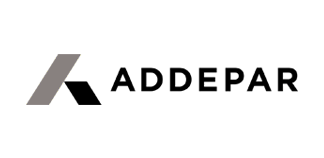Understanding Investment Grade Bonds
November 2021
Stocks offer hard-to-beat returns in exchange for volatility, whereas investment grade bonds provide your portfolio with the balance you need to achieve your long-term investing goals.
What Are Investment Grade Bonds?
Investment grade bonds are corporate and government debt that bond rating agencies judge as very likely to be paid back, with interest.
Remember, a bond is just debt taken on by a company or a government agency to fund projects, much like you would borrow to buy a house or finance a car. While all debt—personal or corporate—is issued with the expectation that it will be fully repaid, unfortunately that isn’t always the case.
That’s why credit rating agencies—Fitch, Moody’s and Standard & Poor’s—evaluate bonds. The agencies assign investment grade bonds ratings of BBB- (Standard & Poor’s and Fitch) or Baa3 (Moody’s) or better. These ratings signify investment grade bonds are lower risk and are more likely to be repaid, making them good fits for more conservative portfolios seeking diversification or income.
At the other end of the rating spectrum are junk bonds: Risky debt that generally offers appealing yields along with a greater likelihood that the issuer could fail to repay your investment or meet their interest payment obligations.
Advantages of Investment Grade Bonds
- Less risky than stocks. Because bonds generally don’t experience the same volatility—or price fluctuations—as stocks, the value of your investment grade bonds is much more likely to remain constant on a day-to-day basis. In the unlikely event that a company goes bankrupt, bondholders are paid out before its stockholders, making it much more likely you’ll see a full return of the amount you invested.
- Income generation. Income investors and retirees prefer investment-grade bonds because they produce a regular, reliable income stream. While certain stocks offer dividends, the payments aren’t guaranteed like bond interest payments are.
- Higher yields than other fixed-income alternatives. Investment grade bonds tend to have higher yields than treasuries or municipal bonds. While interest rates for most investment grade bonds aren’t looking great right now, the longer-term average yield for investment grade corporate bonds is 2%, compared to municipal bonds’ 1.3%.
Disadvantages of Investment Grade Bonds
- Lower returns than stocks. Historically, bond yields have been lower than the returns you can earn in stocks. It can be more difficult to meet your retirement or other investment goals if you invest too much of your portfolio in bonds. “You’re not likely to earn enough to keep up with inflation,“ says Maggie Gomez, a certified financial planner (CFP) with Money with Maggie.
- Less liquidity. If you invest directly in bonds, versus holding shares of bond funds, you may not be able to offload your holdings in a pinch. Bonds typically need to be held until their maturity date, so your money will likely be inaccessible for several years. Or, if you are able to sell your bonds on the secondary market, you may have to sell at a loss.
- Less transparency. Most corporate bonds are traded over-the-counter (OTC), meaning the market not only has less liquidity but also less transparency regarding prices. That increases the likelihood you end up paying more than you have to—and it’s also why financial advisors recommend most investors should stick to bond funds, rather than individual bonds.
- Potentially high buy-ins required. Most bonds are issued in $1,000 increments and aren’t available as partial shares. This can result in large capital requirements for those looking to start investing in individual bonds.
How to Buy Investment Grade Bonds
Most people should stick to buying investment grade bonds via mutual funds, index funds and exchange-traded funds (ETFs). Navigating the bond market is challenging, and making good investments in individual investment grade bond issues requires expert-level knowledge.
The best bond funds offer a simple, inexpensive way to buy investment grade bonds. They are easy to purchase in a standard brokerage account or tax-advantaged retirement plan, typically with zero commissions and low expense ratio fees. Plus, bond funds provide instant diversification and are professionally managed, helping you avoid many of the pitfalls associated with individual bond investing.
If you’re dead set on buying individual investment grade bonds from a government or municipality, you should be able to purchase them directly from an issuer or the financial institution running the bond issue. It can be very difficult to buy corporate bonds directly from a public company, and you’ll most likely wind up purchasing them on the secondary market, where pricing can be much less transparent.
About Snowden Lane Partners
Snowden Lane is a nationally branded, open-architecture, hybrid registered investment advisor and
broker-dealer that provides wealth advisory services to high net-worth individuals, families, and
institutional clients.
Snowden Lane is led by an experienced team of industry executives, including Lyle LaMothe, Chairman
of the Board of Managers, Rob Mooney, Managing Partner & CEO, and Greg Franks, Managing Partner,
President & COO, who are dedicated to building a client-focused, nationally branded, boutique wealth
advisory partnership.
Snowden Lane is headquartered in New York City and operates an SEC registered investment adviser
and a broker-dealer. Snowden Lane provides a multi-custodian, multi-currency platform, with
aggregated performance reporting and leading analytical tools for clients and advisors. It further
provides full operational, finance, compliance, human resources, and financial advisor transition support
to its financial advisors.
Contact:
Kevin Santo
Water & Wall
516-506-8560
kevin@waterandwall.com




